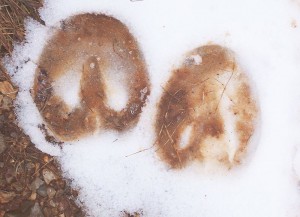Why is my horse suddenly severely lame?
Have you ever come home from and gone out to see your horse only to find that they’re hobbling around on three, with no obvious sign of trauma or any other issues? You think back to the morning, and there was no indication that anything was wrong. Your horse was happy to see you, happy to eat breakfast. What could have happened?
Unfortunately, here in Colorado, that is an all-too-common scenario, and one that we see regularly in our practice. The vast majority of the time that a horse shows these signs, the diagnosis is a hoof abscess – nasty infections within the foot that can very quickly leave a horse on 3 legs.
An abscess is an infection that is creating pus. This pus, along with the swelling associated with the infection, causes a significant amount of pressure – especially within the hoof capsule. As this pressure develops, the horse becomes more and more lame, and the act of putting weight on the hoof causes the pressure to build even more.
The signs associated with hoof abscesses are usually sudden severe lameness, and often a distinct or throbbing pulse in the affected foot. There can be pain associated with palpation of the coronary band on the affected foot, but not always.
How did your horse get that abscess, and why is it so common in Colorado?
Unfortunately, our environment lends itself to creating these issues. The dry ground our horses live on causes dry hooves, which have a tendency to get bruised. A bruise in the bottom of the equine foot is a petri dish waiting to happen. Add a little bit of water to the ground and as the foot soaks it in, along come the bacteria and shortly thereafter, the abscess.
Hoof abscesses are certainly a common issue within our practice, and with proper treatment and care, they can resolve quickly and return your horse to 100%. But to prevent complications, and be assured that an abscess is the correct diagnosis, you should involve your vet quickly. It is always possible that the lameness is a fracture or break, or cellulitis.
So keep an eye on your horse, and if they suddenly come up lame for seemingly no reason whatsoever, give us a call!
Happy spring everyone.



